Elementary Composition Theory
Composition is about directing the viewer's gaze across your drawing to one or more focal points, the idea being to keep their interest within the confines of your paper's edges, and not to lead their eye out of the picture. Essentially it is about dividing space in a way that's pleasing to the eye. Composition is based on theoretical knowledge that comes with experience, but theory is only a guideline, and a good eye can dispense of rules. 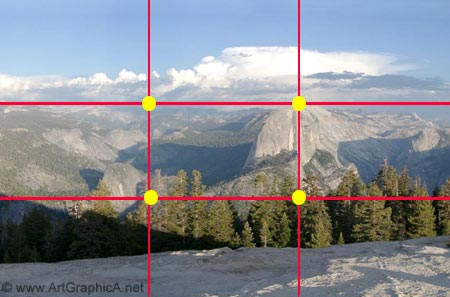 In the advanced section we look at a painting by a very respected 18th century German painter, and he breaks some of the cardinal rules, usually placing his focal point smack bang in the centre of his canvases.
In the advanced section we look at a painting by a very respected 18th century German painter, and he breaks some of the cardinal rules, usually placing his focal point smack bang in the centre of his canvases.
Rule of Thirds
The rule of thirds was handed down by the Renaissance painters, used so that the eye didn’t fall straight towards the centre of our scene, but dates back to Euclid and the ancient Greeks. Using this method, the centre of interest is placed along one of the intersections; in the example above, half dome (the dome shaped rock in California's Yosemite Park) is placed along the vertical line, and the horizon runs along the top one third of our composition.
Leading the Eye Into the Picture
Objects that denote potential movement, such as a person, animal, vehicle etc. should be positioned so as to appear to be moving into the picture, and not as though they are about to leave it. The bottom-right cropped photo places the frog in a position where he/she may decide to hop out of the frame at any moment.


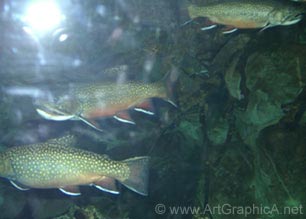
The photograph on the left is a bad example, not only as a photograph, but as a composition. The fish want to exit from both the sides of the photo.
It is possible to lead the eye into a photograph and then lead it straight back out again. The photograph on the bottom left features a prominent path that leads us up to Elvastone Castle, and keeps the interest held in place by the surrounding trees. The bottom right photograph leads the eye along a path that takes us straight out of the frame. Not only is it a boring photograph but it is not well balanced - the dark contasts are unbalanced by the lightness and emptiness of sky filling the top right-hand quarter of the shot.
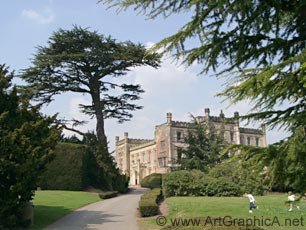
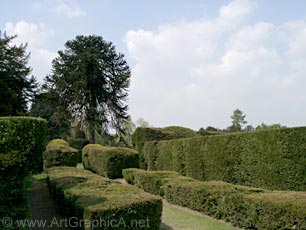
Focal Dominance
It is not a good idea to compete more than one object for the viewer's attention. The perspective in bottom left photograph ensures one of the structures appears more dominant in size. The water leads to a point approximately one third from the right of the photo edge, following the rule of thirds.
The same Hoover Dam structures, shown in bottom right picture, compete in size, and there doesn't seem to be any particular focal point, with the bland foreground stealing the lightest contrasts.
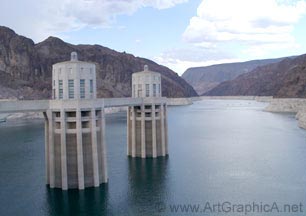
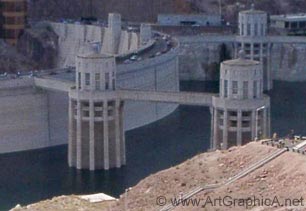

Extreme Contasts
Whenever a light area meets up against a dark area, the interplay of extreme light and dark make for a very dynamic combination. You should try to exploit it in some of your drawings.
Framing
If there is an opportunity to use an item in the foreground, try using it to frame your work; it is another means of adding more interest to a piece.
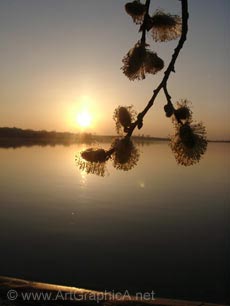
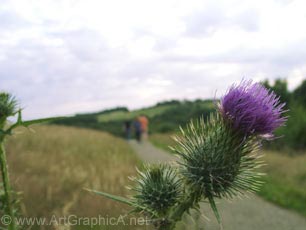

Angle
Slightly unsual perspectives and angles make for a much more interesting picture. If taking photographs to use as a reference, try crouching or using a macro lens to capture your shots.
Balance
Balance in a composition is important, and more intuitative than there being any objective way to measure such a thing. If you find there is a lot of contast in one area of your photograph, but a reasonable section is sparse, you will need to find a way to balance its tonality across the page. Take the bottom left photograph: the sky is very white throwing out the balance of the entire photograph. Some darker clouds would resolve this. Bottom right we have a deep contast at the foot of the photograph, mirrored by the horizon line, and the dark clouds keep a sense of balance throughout the shot.
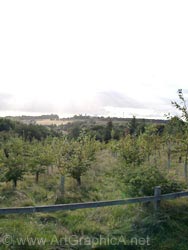

Tutorial is copyright of ArtGraphica